Wood Duck nest boxes at Stow Lake
By Dan Richman
This July, Golden Gate Bird Alliance Volunteer Coordinator Noreen Weeden asked me to build a pair of Wood Duck nest boxes for duck-happy Stow Lake in Golden Gate Park. She offered me precise plans from a gentleman with the intriguing name of “Don the Wood Duck Man” from the State of Minnesota. I was happy to do it.
As you probably know, Wood Ducks nest off the ground in hollow trees. A day after the ducklings hatch, mama flies down and calls to them. The tiny ducklings climb to the entry hole and leap out. Their undeveloped wings beat away but manage little more than to stabilize the fall so that the babies land on their bellies rather than on their heads – if they’re lucky. (There are lots of videos of this dramatic skydive on the web, such as this one taken from outside the box or this one taken from inside.)
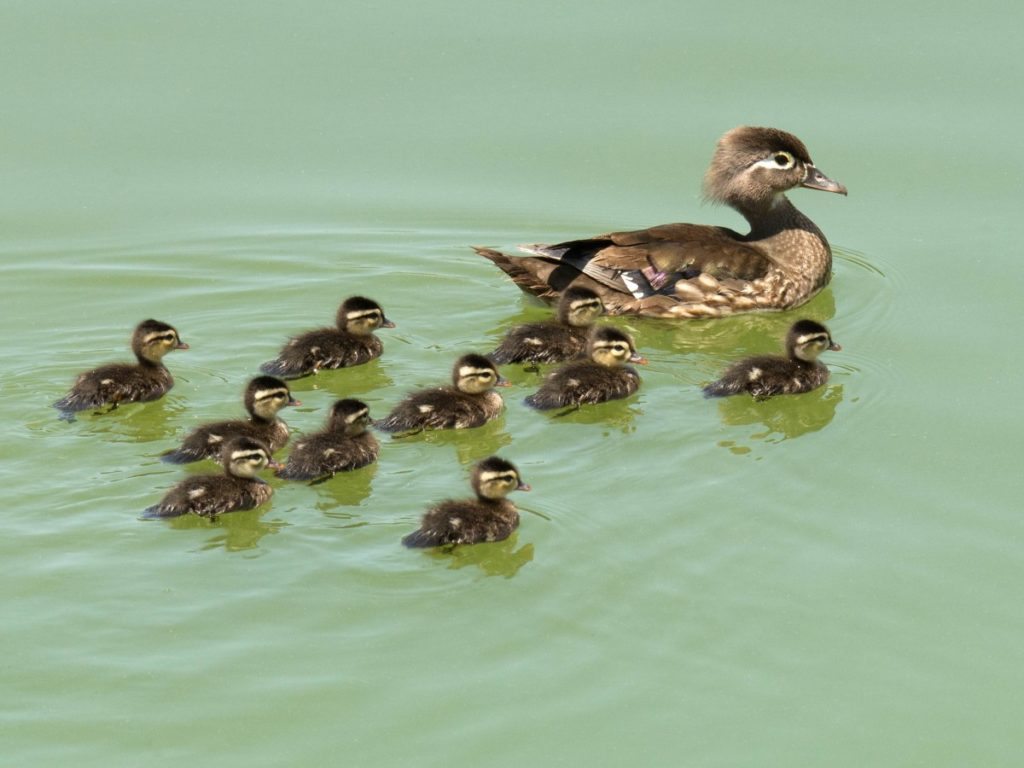
Mama swims around below the nest until all the babies — as many as sixteen or more — have taken the plunge, then leads them to as safe a place as possible where they can learn to forage for food in the big world.
Since urban park maintenance crews – not to mention lumber companies and the U.S. Forest Service in wild lands — habitually cut down dead or rotting trees that provide nesting hollows, duck enthusiasts have developed nest boxes to take their place. Now it was our turn.
I bought twelve-inch redwood planks at Sierra Point Lumber in Colma and ripped them and cut them so that the boxes would end up two-and-half feet high, eight inches deep, and eight inches wide. The plans called for a sloped roof with an overhang front and rear, a mouth-shaped entry hole, and half-inch wire mesh attached inside the box to provide a ladder to the hole for the newly-hatched ducklings, which have unusually long claws on their webbed feet for climbing purposes.

Following the advice of Don the Wood Duck Man and the Cornell Lab of Ornithology, I had predator shields made up of galvanized tin by a metal fabricating shop. These shields are about three feet wide and are cone-shaped and mounted umbrella-like on posts just below the nesting boxes. Their purpose is to ward off rats, raccoons, possums, skunks, cats, squirrels, snakes, and other predators that will climb posts or even steel pipes to snatch eggs or chicks from nest boxes. The predator threat is also the reason Cornell recommends mounting the boxes on posts instead of on tree trunks. They even suggest placing posts at least sixteen feet away from overhanging tree branches, since squirrels can leap remarkable distances.
I happened to have a pair of ten-foot pressure-treated fir posts. I primed and painted them a forest green. The posts would be attached by clamps to steel pipes driven into the lake bottom. Then the nesting boxes and the predator shields would be attached to the posts.
On August I0th, a fine, fine morning, I trucked everything over to the Stow Lake Boat House where I met Noreen and Lee Karney, an Audubon volunteer photographer. Also present were Chris Womack, a young and enthusiastic S.F. Recreation and Parks worker and Andy Stone, the park’s Area Supervisor. The plan we quickly came up with was that Chris, Noreen, and I would set off on the lake in a rowboat with the nest boxes and tools, while Andy and Lee would drive around and meet us in a pickup truck that carried two lengths of steel pipe and the wooden posts.
First we rendezvoused at an existing nest box that needed some repair. We took care of that, also stuffing some wood shavings into the box as nesting material.
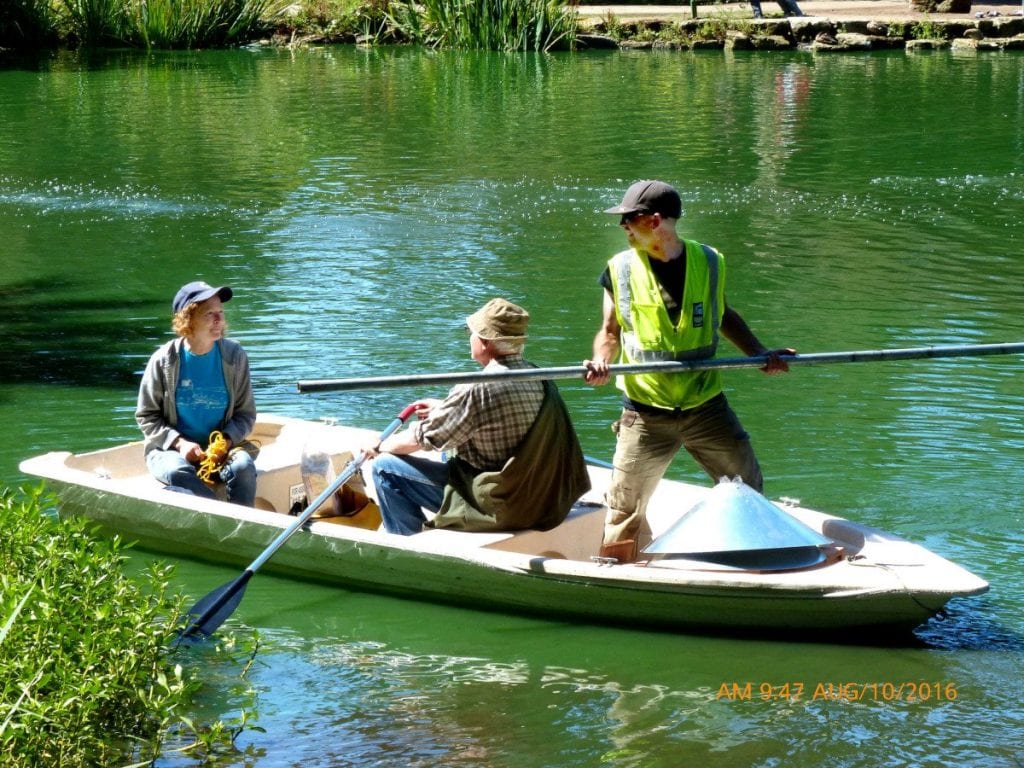
We then moved on to the first site for a new box, located in a few feet of water off Strawberry Hill Island, the big island in the center of the lake. A couple of weeks earlier Noreen and I and the cheerfully cooperative Andy Stone had driven around the island and picked out likely locations. After Andy passed us a pipe, Chris drove it into the lake bottom at the outside edge of a dense patch of aquatic plants that we hope will deter any people or pets on the island trail from disturbing the box.
Once the pipe was installed, Andy passed us a wooden post and we fastened it securely to the pipe with strong U-shaped pipe clamps. Next we worked a predator shield down the post and, after that, secured the nesting box itself to the very top. That put it six feet above the lake surface, the height recommended by Cornell.

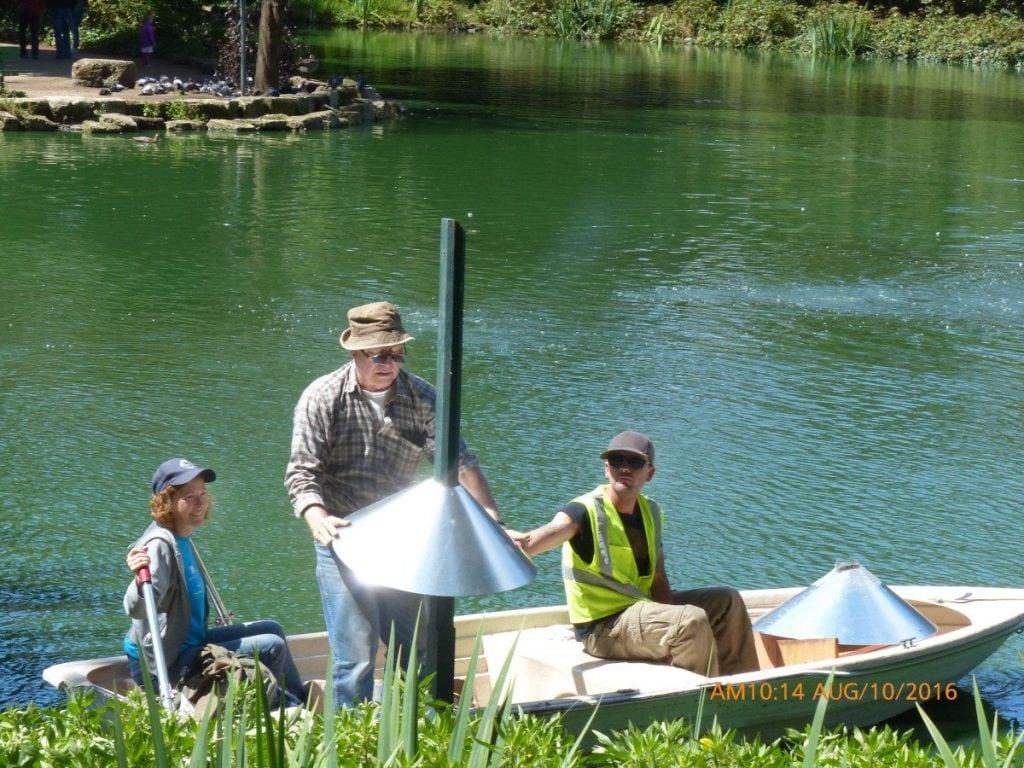
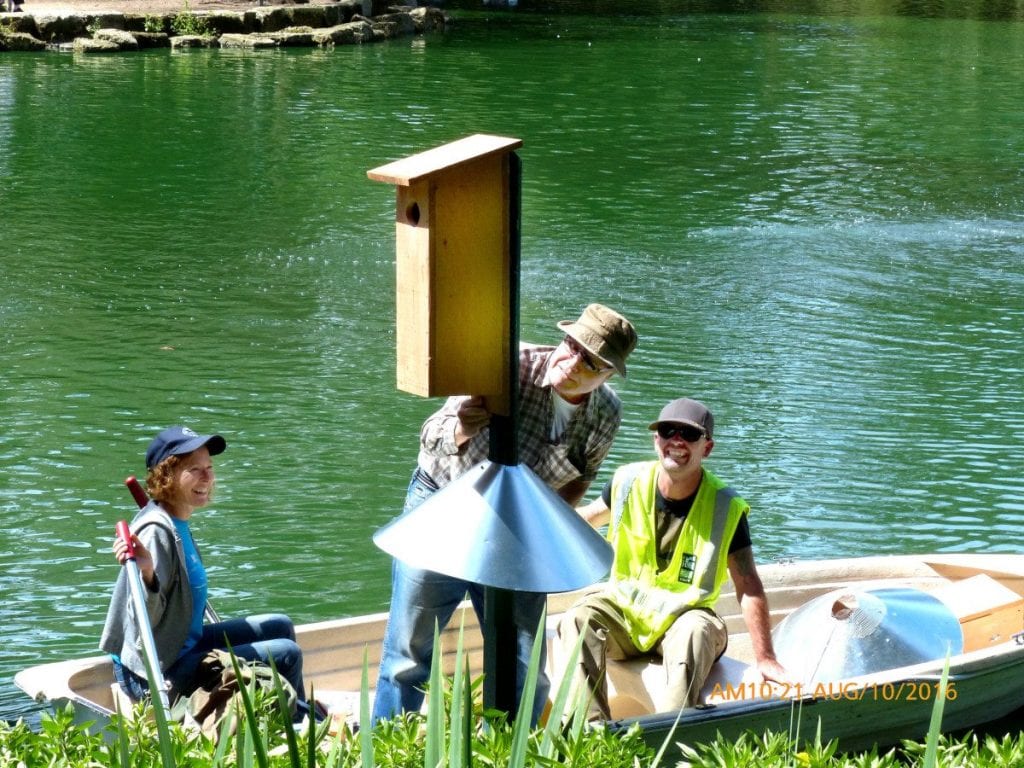
Andy had earlier said how necessary it was to have three people in the boat — one to work and the others to hold the boat in place — and he was as right as rain. Keeping the boat in position turned out to be quite a struggle, but thanks to Noreen and whoever was not at the moment shooting screws or tightening nuts, we managed.
The second box was placed in slightly deeper water off the easternmost island in the lake, an island off-limits to the public, which according to Andy has no name at all.
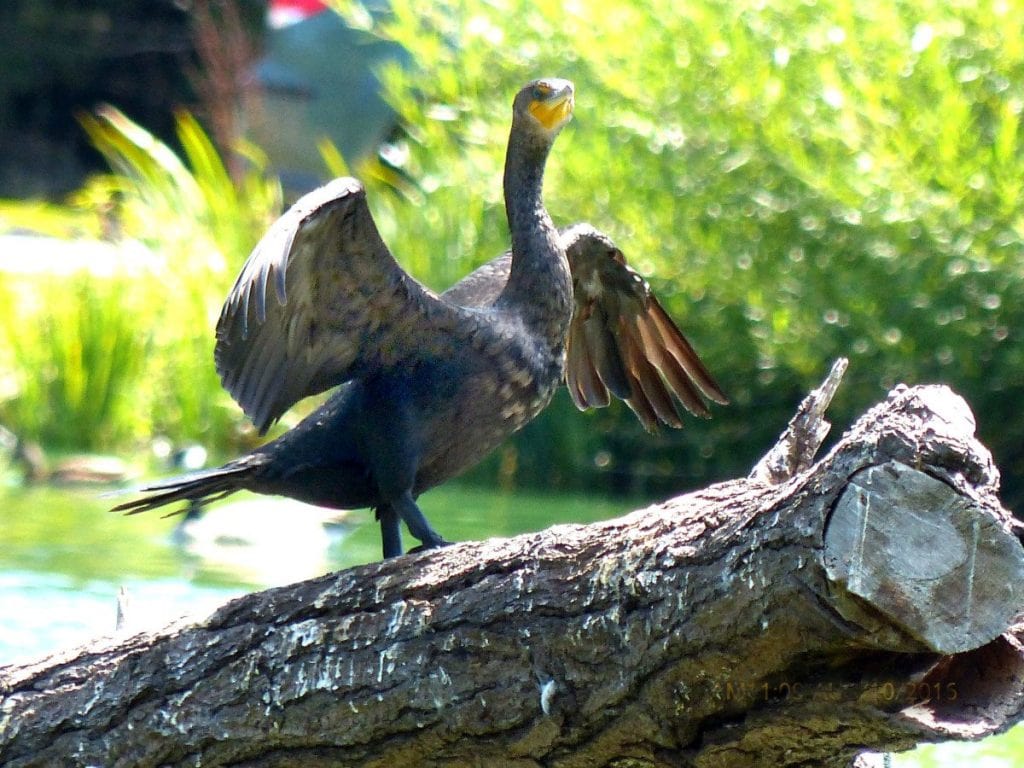
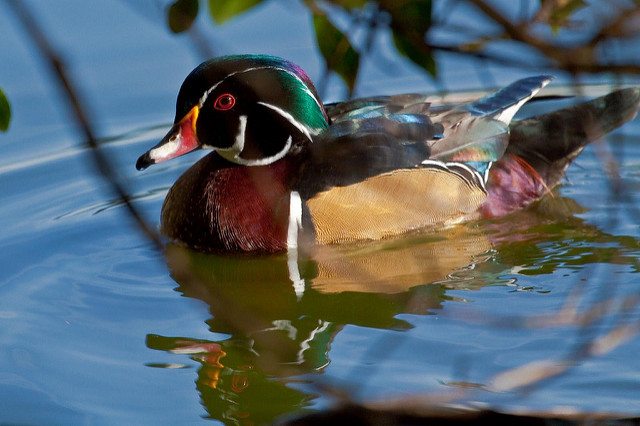
So there they are. I asked Noreen why we were installing the boxes now and not in the spring just before Wood Duck nesting season, and she said because there is a small possibility that the cavities could be used for roosting by Western Screech Owls in the fall and winter.
Well, I wondered, would the owls politely make room for the ducks when the time came? Noreen assured me that in early spring the owls would vacate the boxes in plenty of time for Wood Duck season.
Some things work out.
P.S. On August 30, I was prepping a predator shield for a paint job by the small easternmost island on Stow Lake when I saw two very young raccoons mince out onto a big snag lying in the water, not ten feet away from me. They tested the lake water, found it was good, swam the twenty-five or thirty feet to Strawberry Island, and slipped into the underbrush. That made my day. After watching those animals swim, it also made me very glad we had installed those predator shields, as troublesome as they were.
How You Can Help:
Golden Gate Bird Alliance will need volunteers next spring to monitor the Wood Duck nest boxes and report if they are being used. Training provided! If you’re interested, email Noreen at nweeden@goldengatebirdalliance.org.
S.F. Rec and Parks welcomes volunteers to pull weeds and plant native shrubs on the slopes of Strawberry Hill, which of course is beneficial to birds as well as other wildlife. The volunteers meet at the Stow Lake Boathouse at 10 a.m. on the second Saturday of every month.
Dan Richman has been an ardent lover of the natural world and an environmental activist from far back in the dim past.
